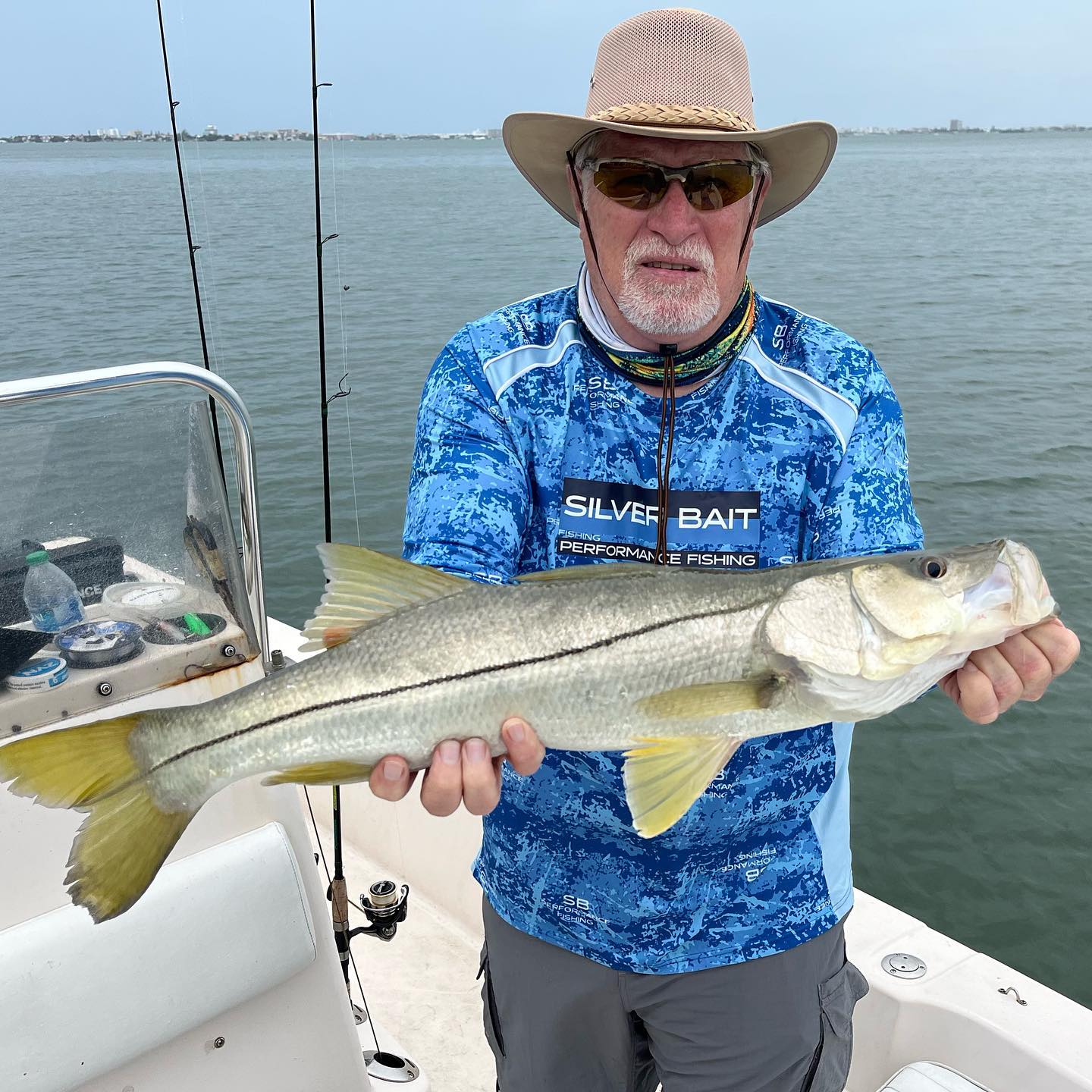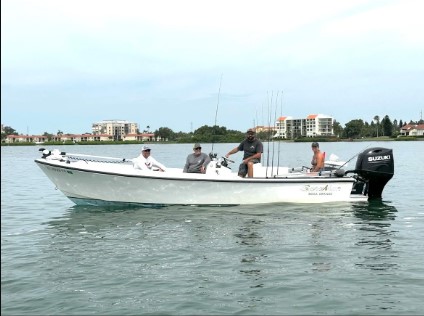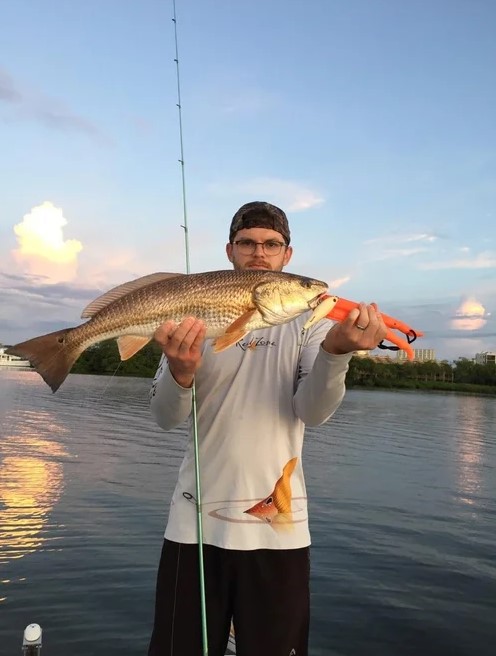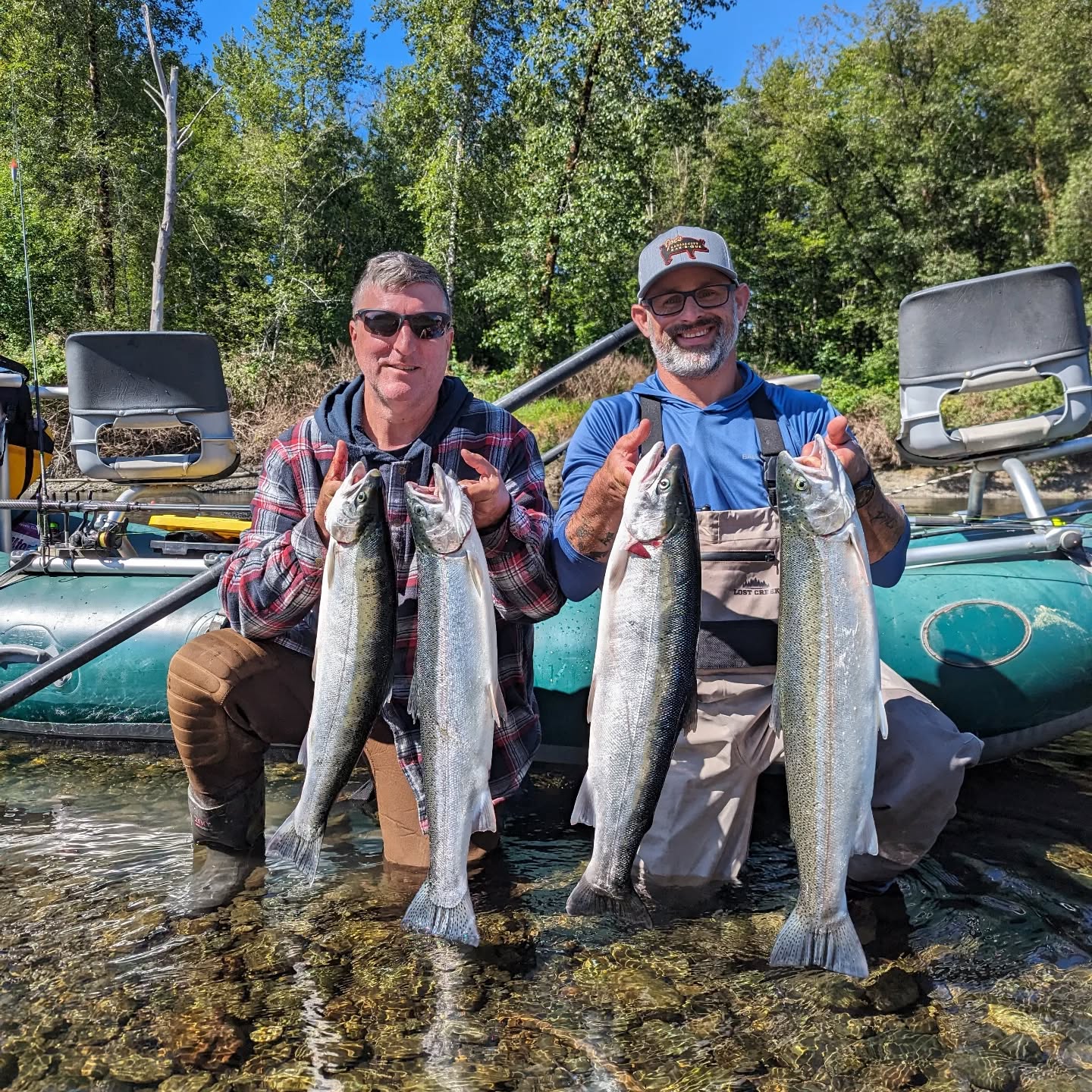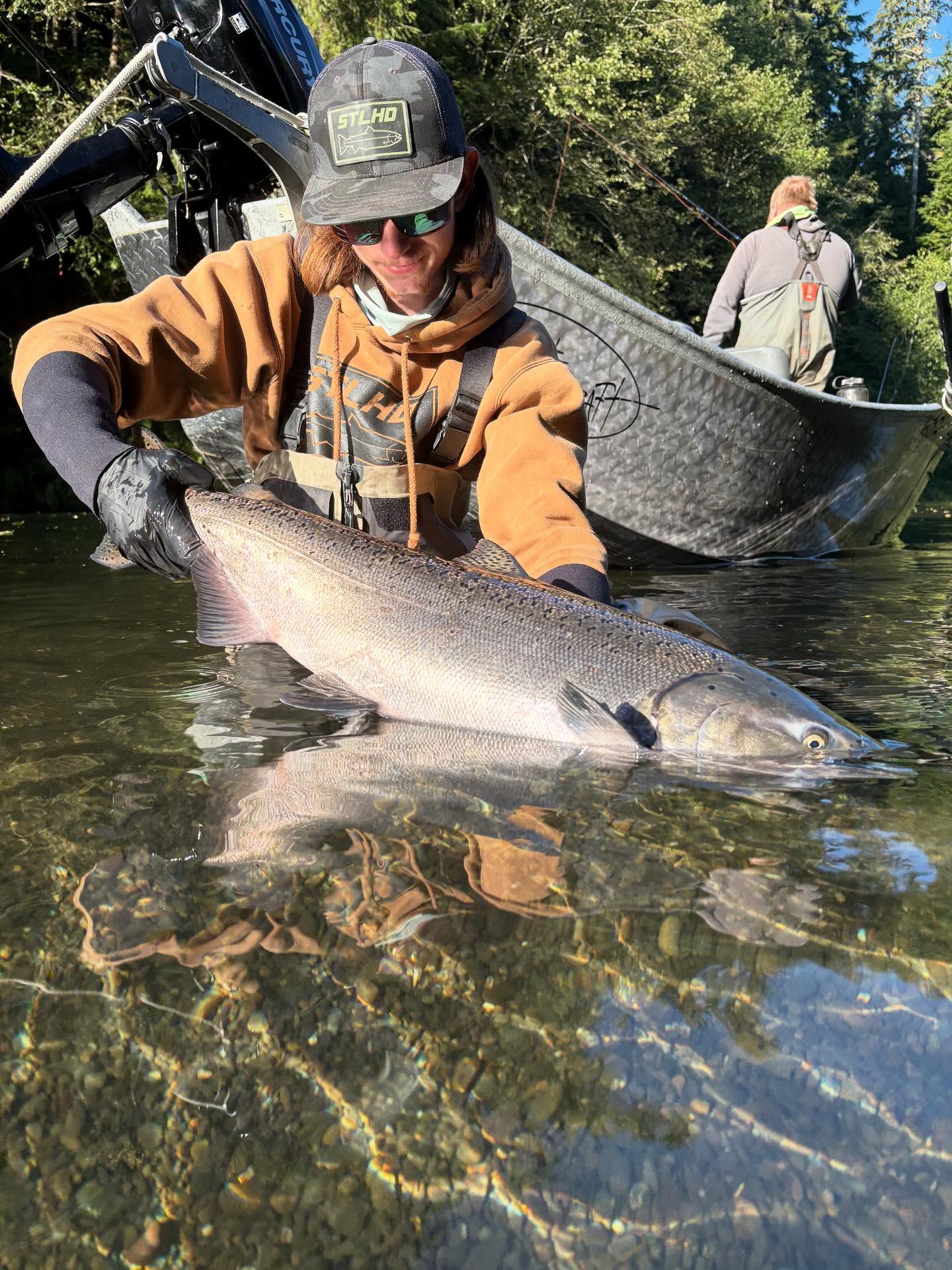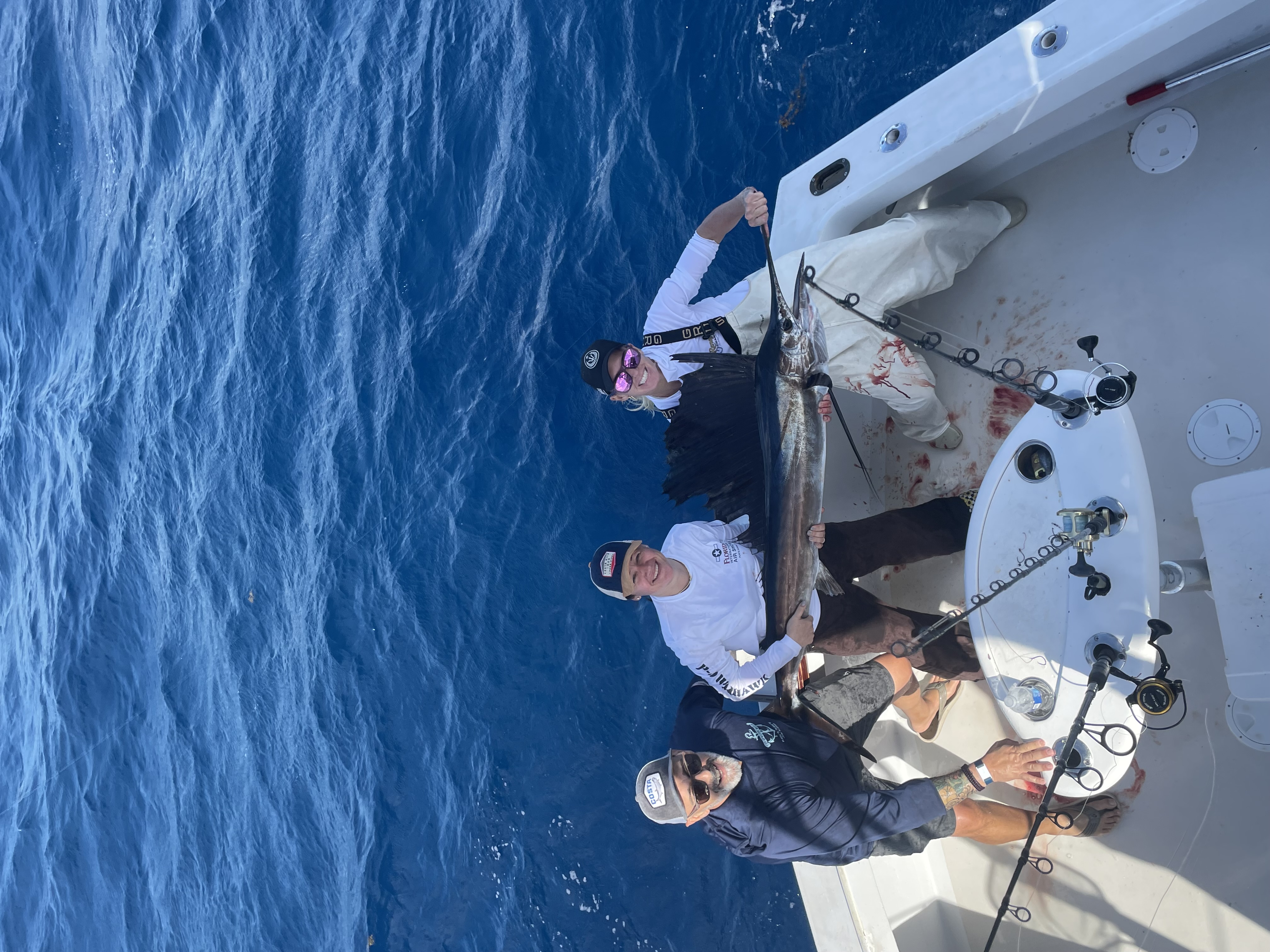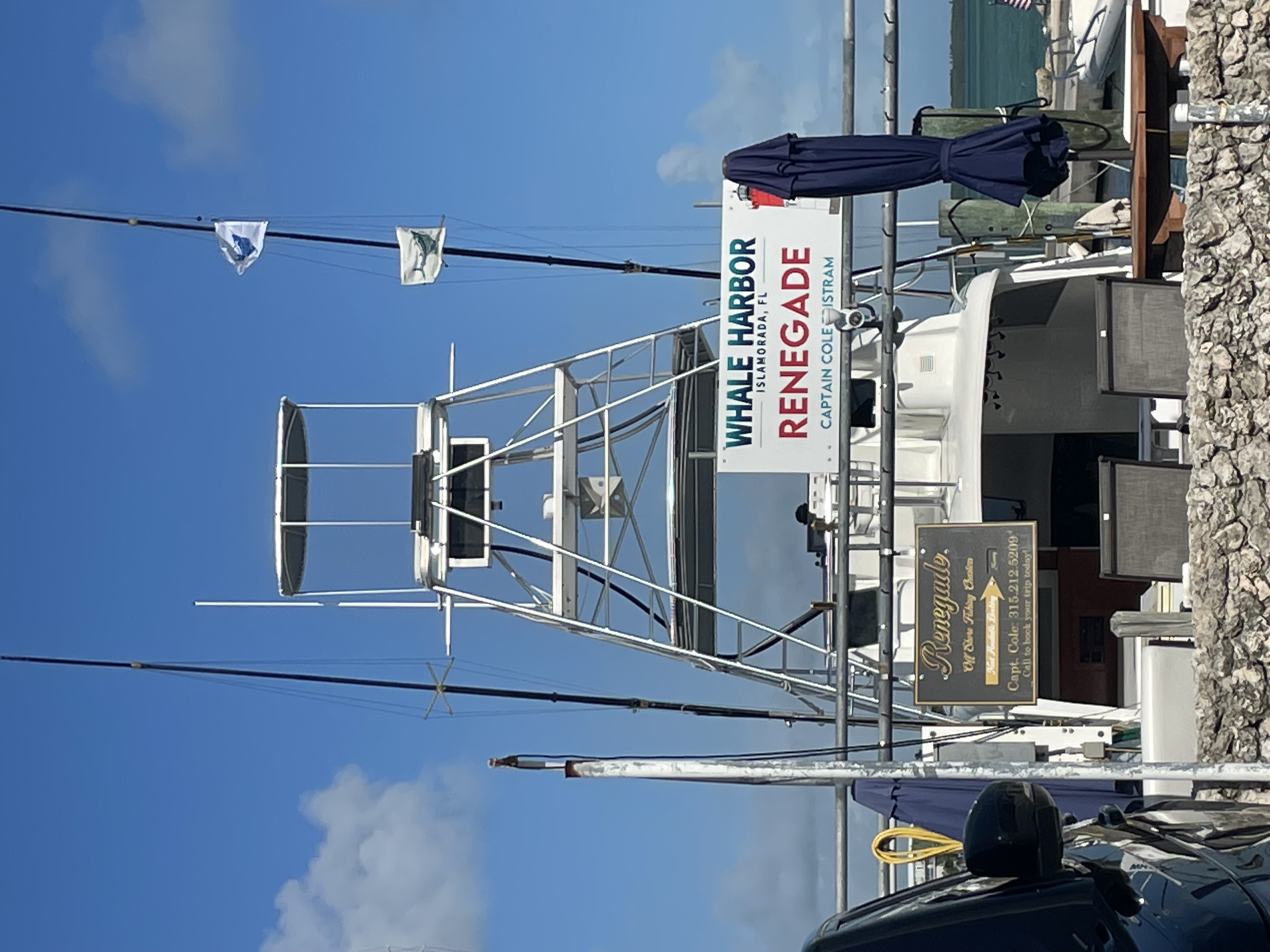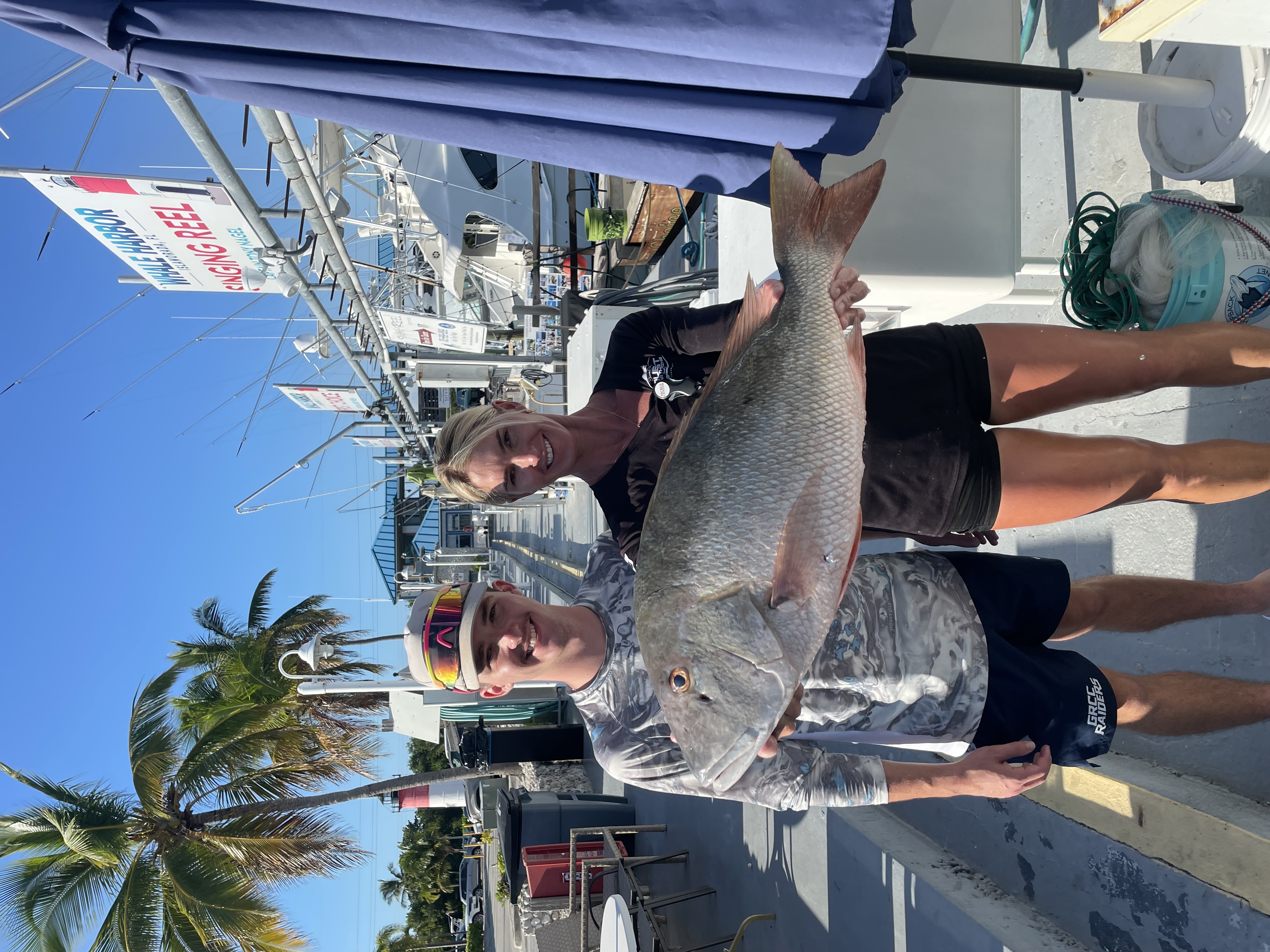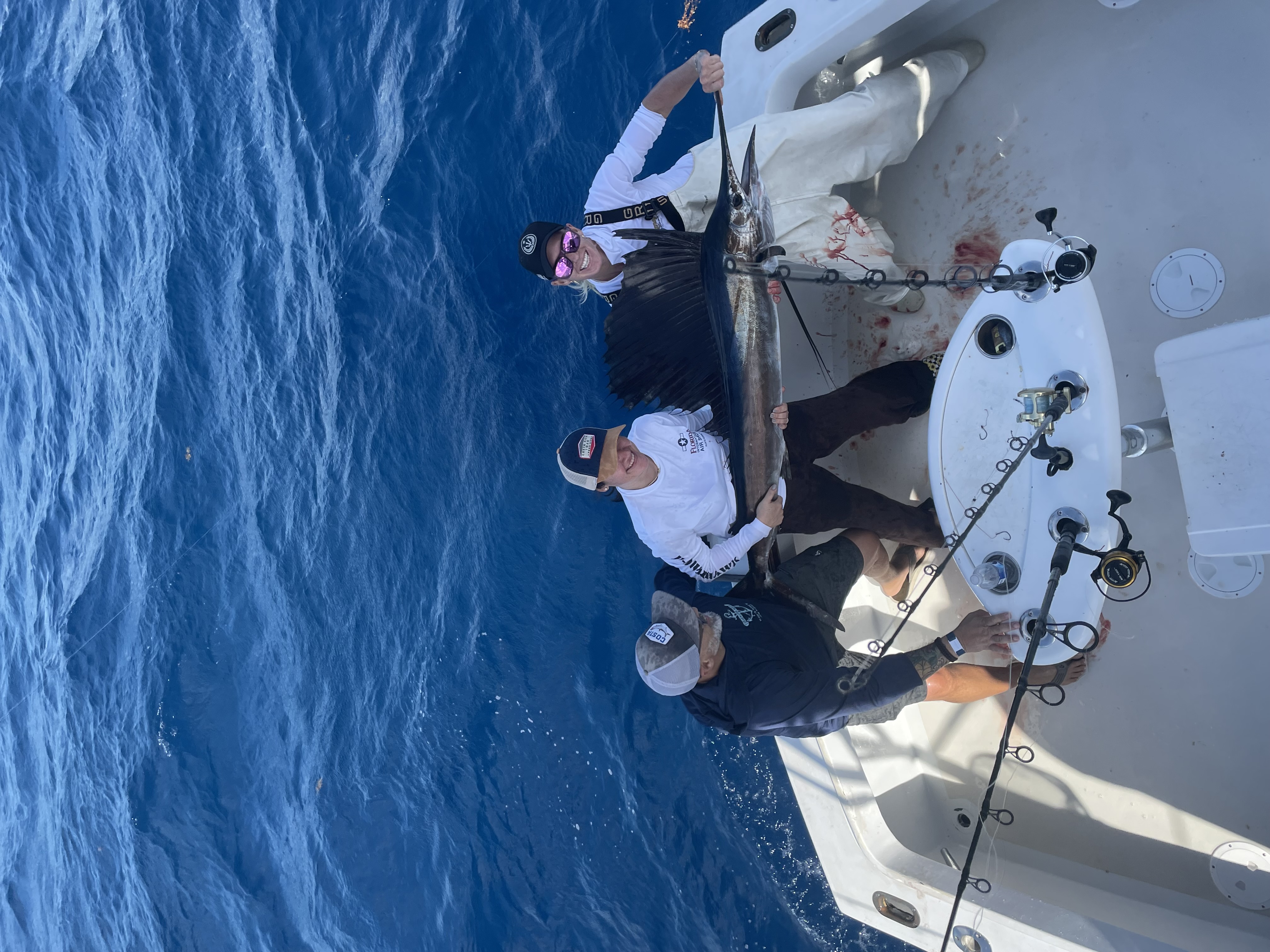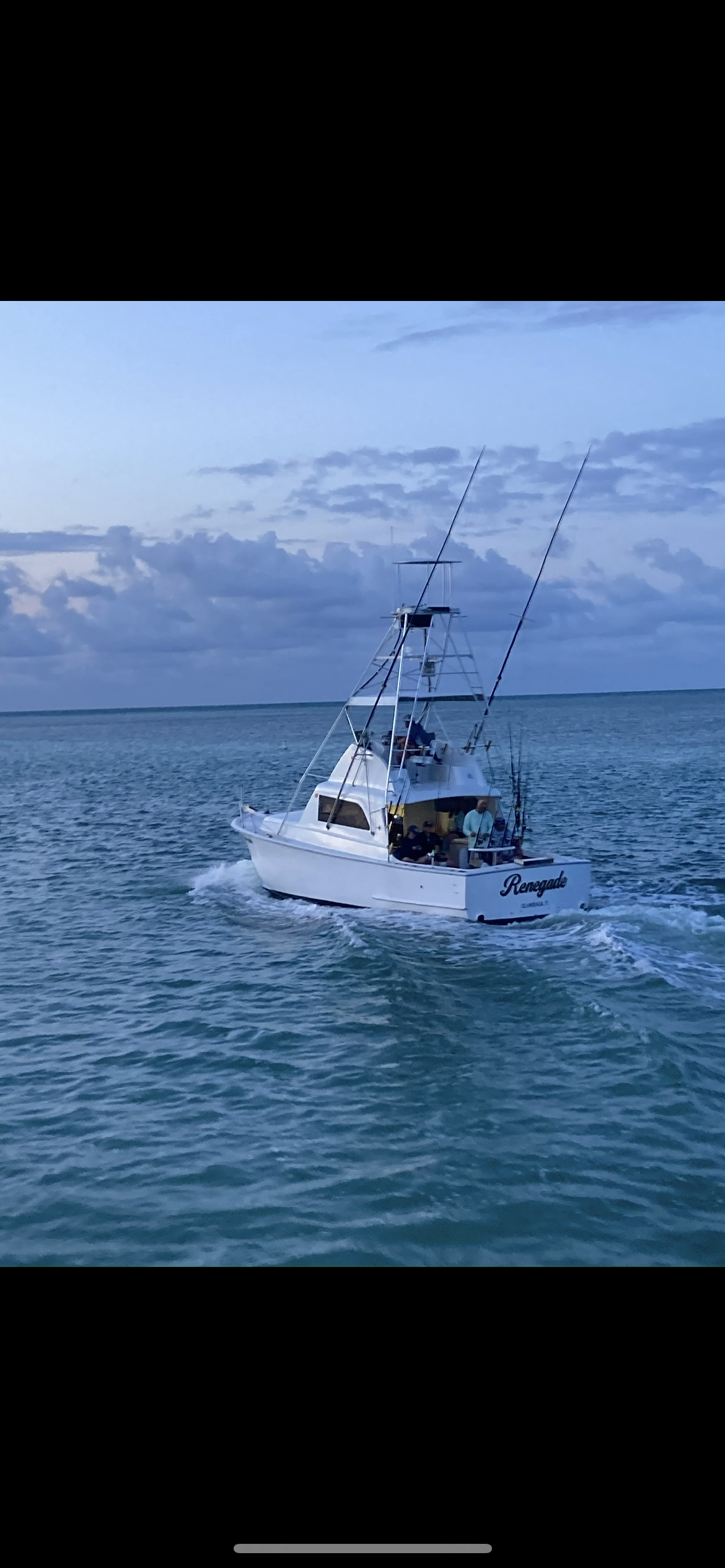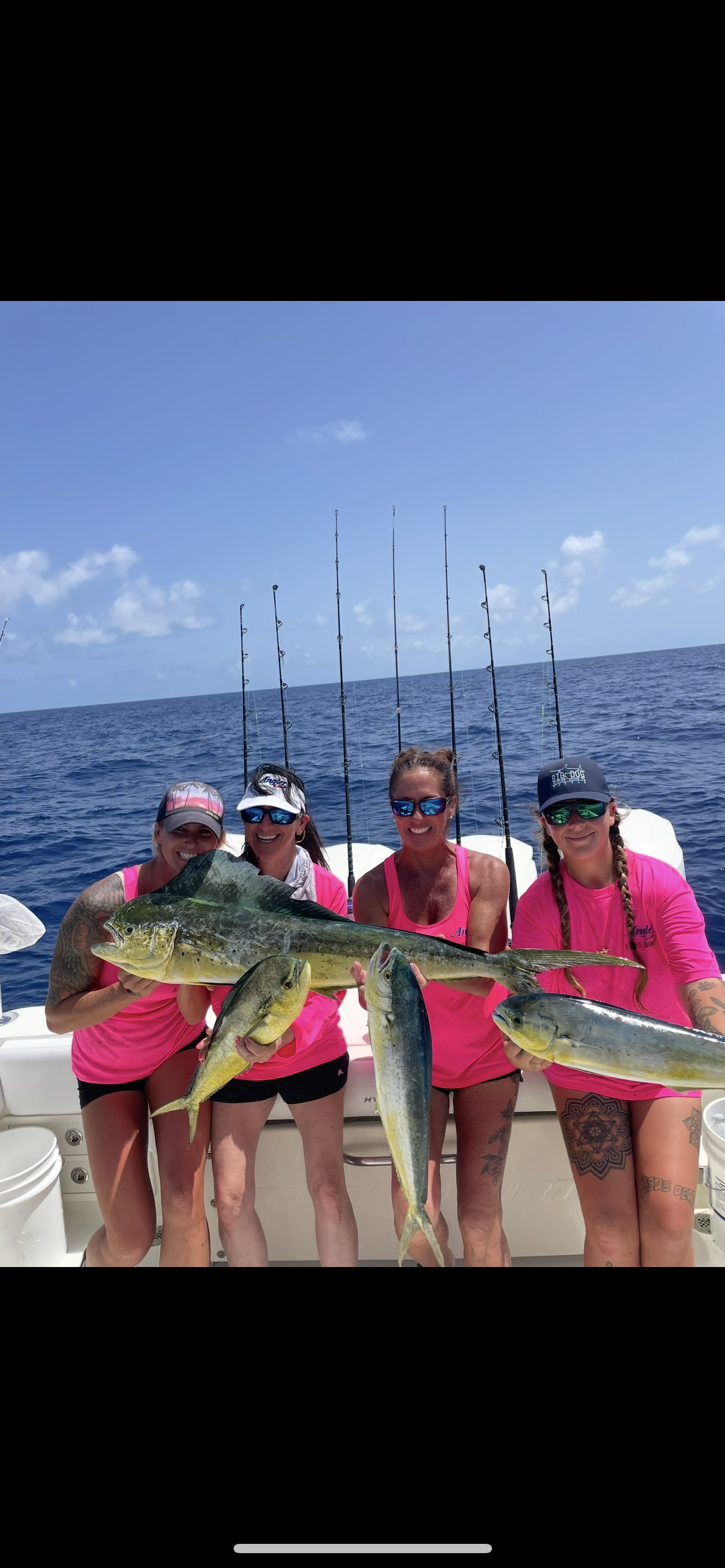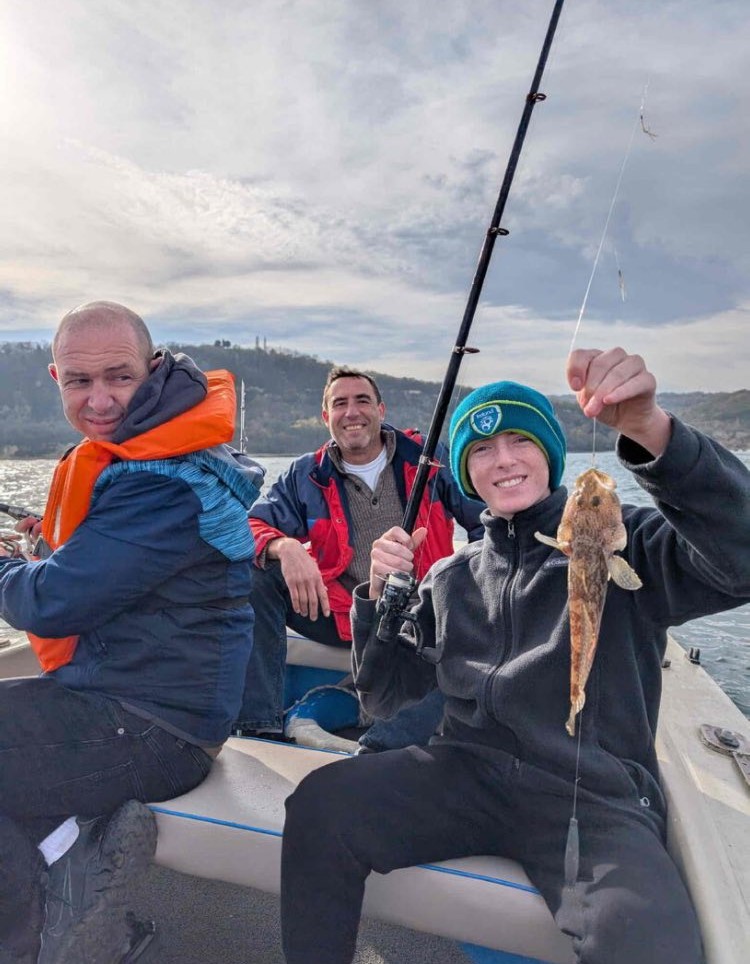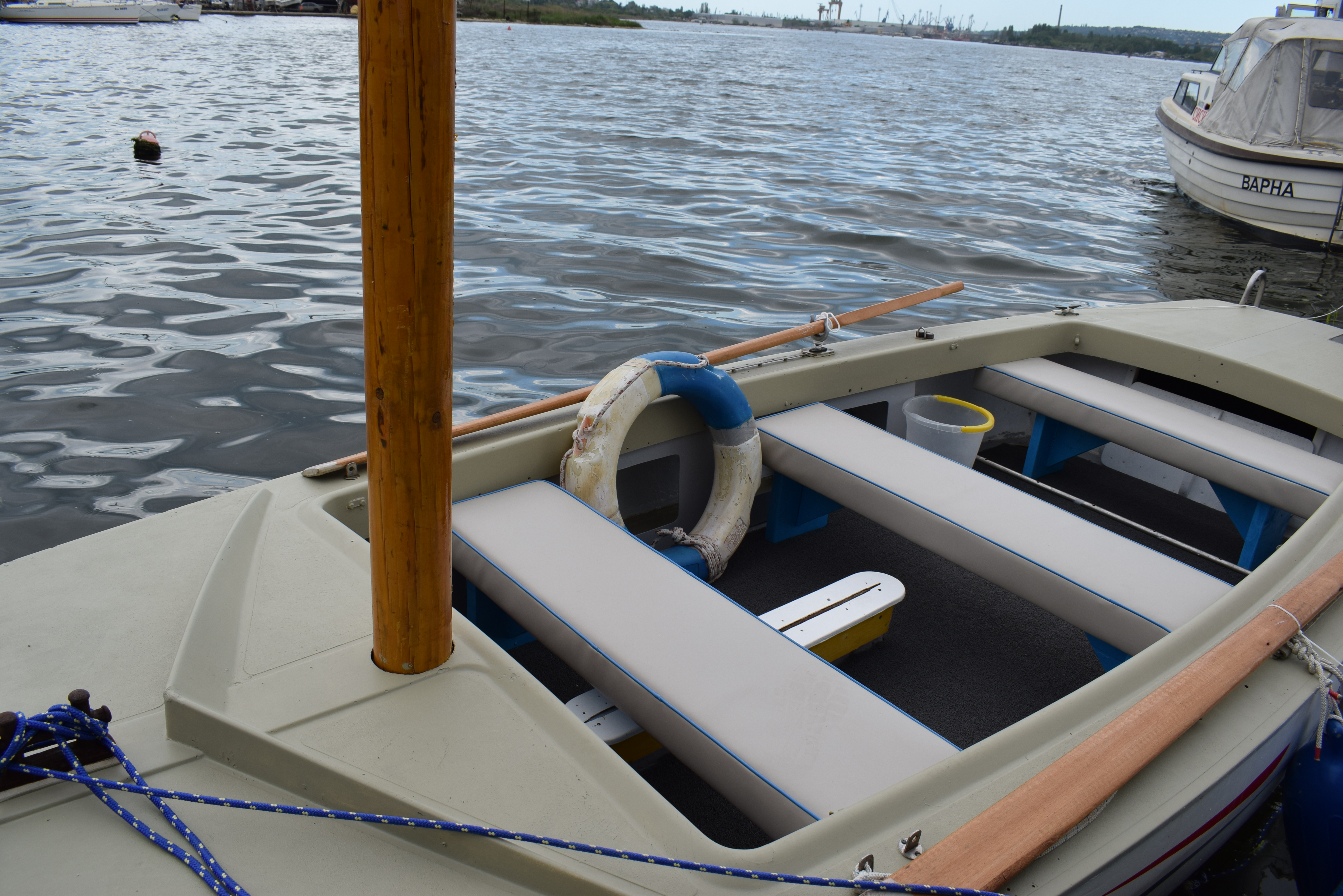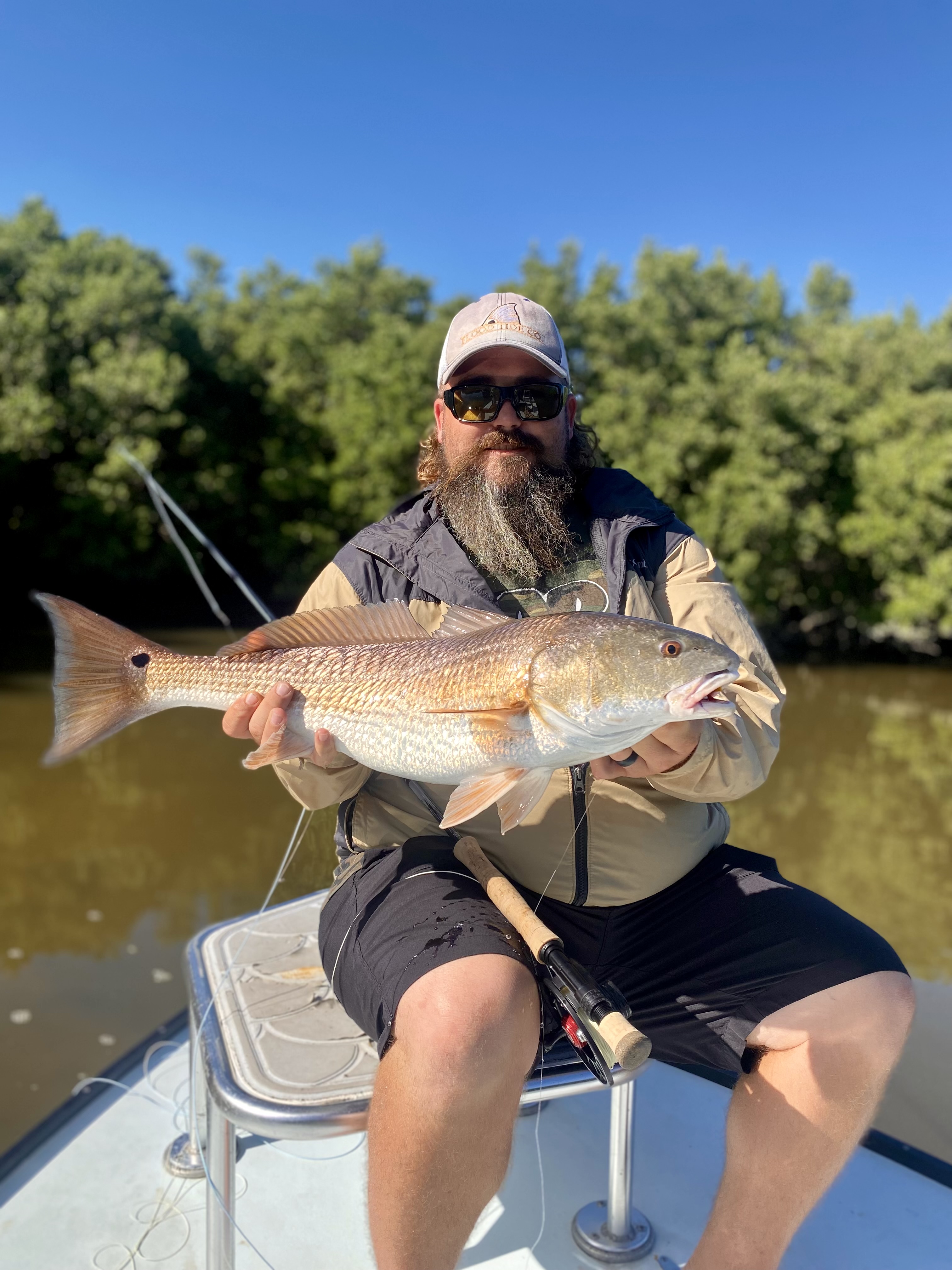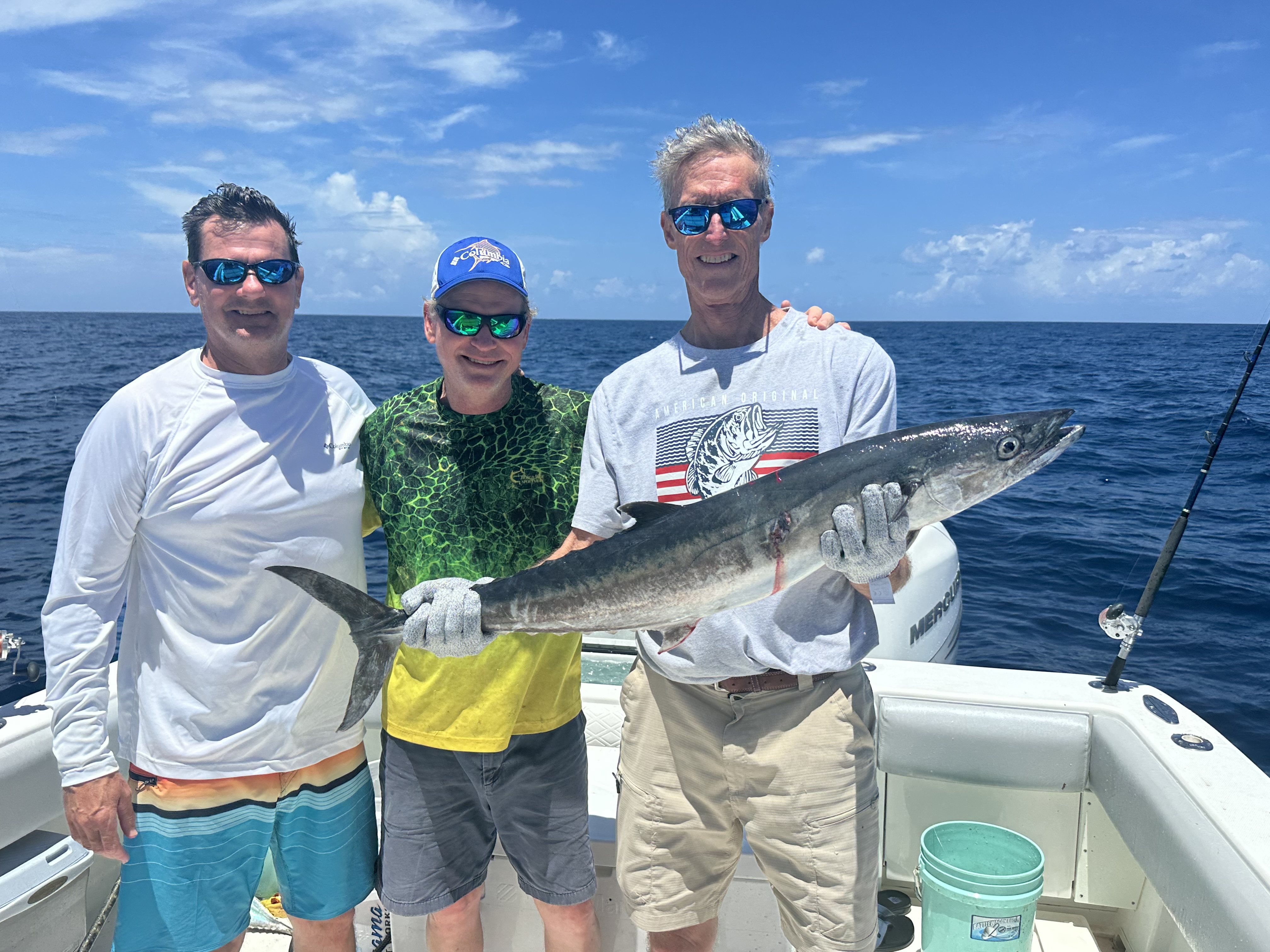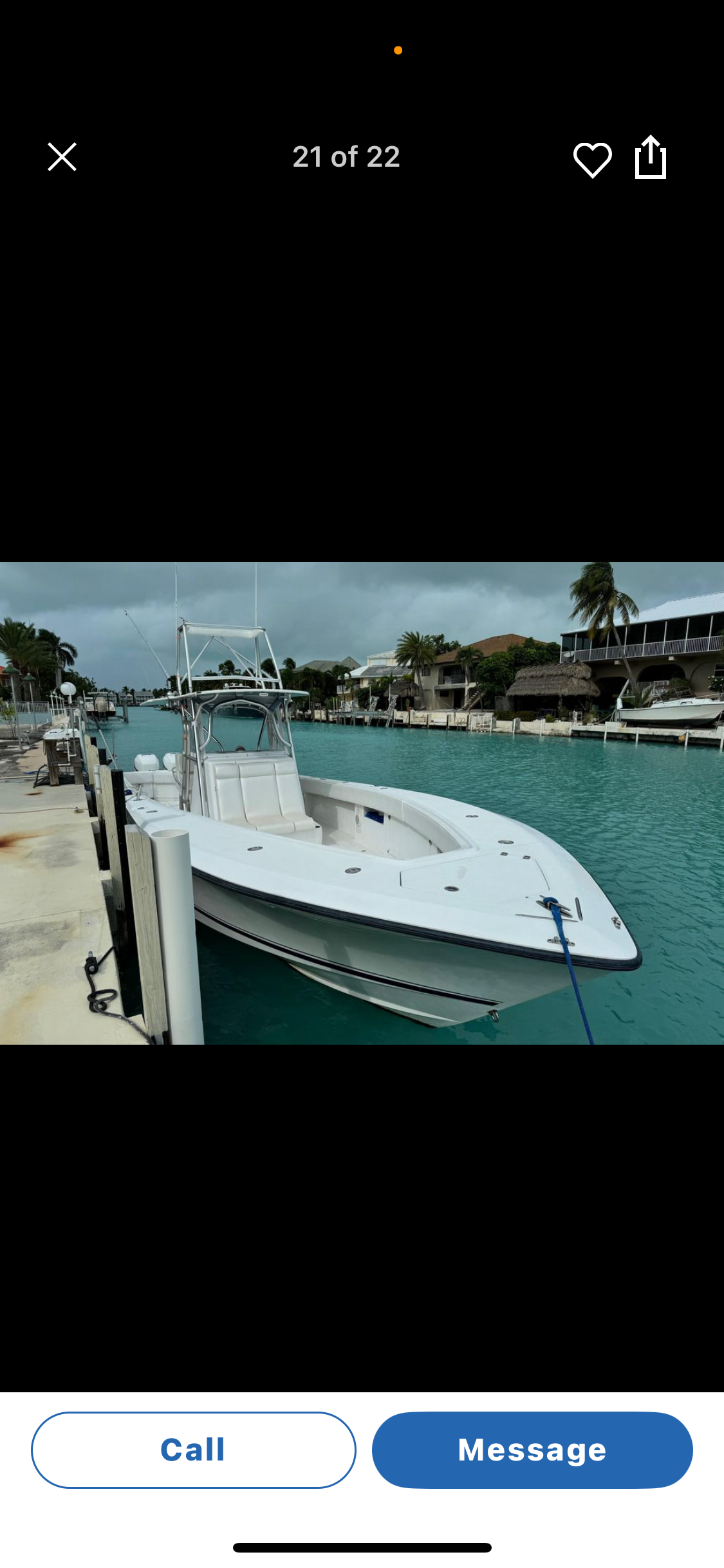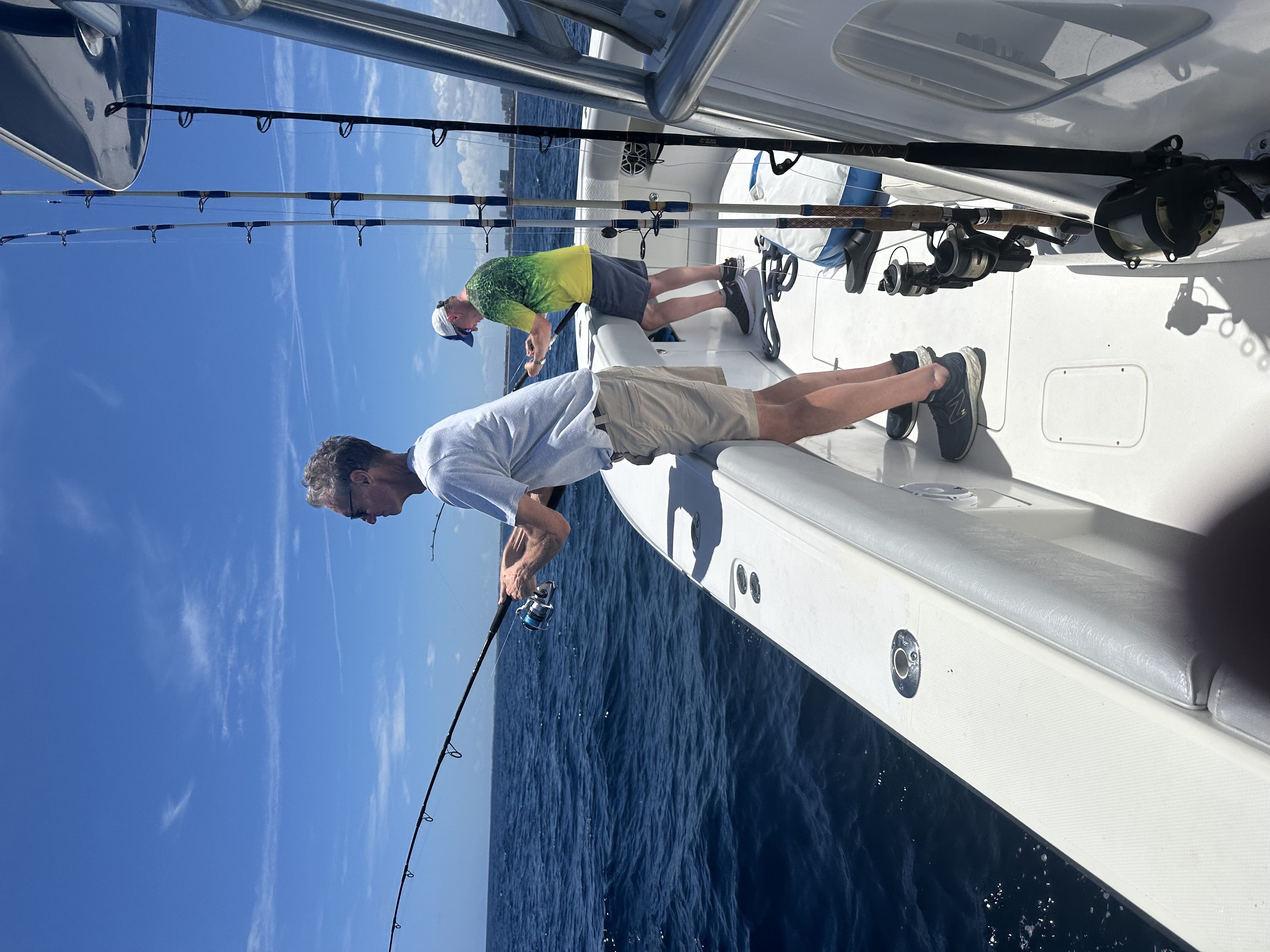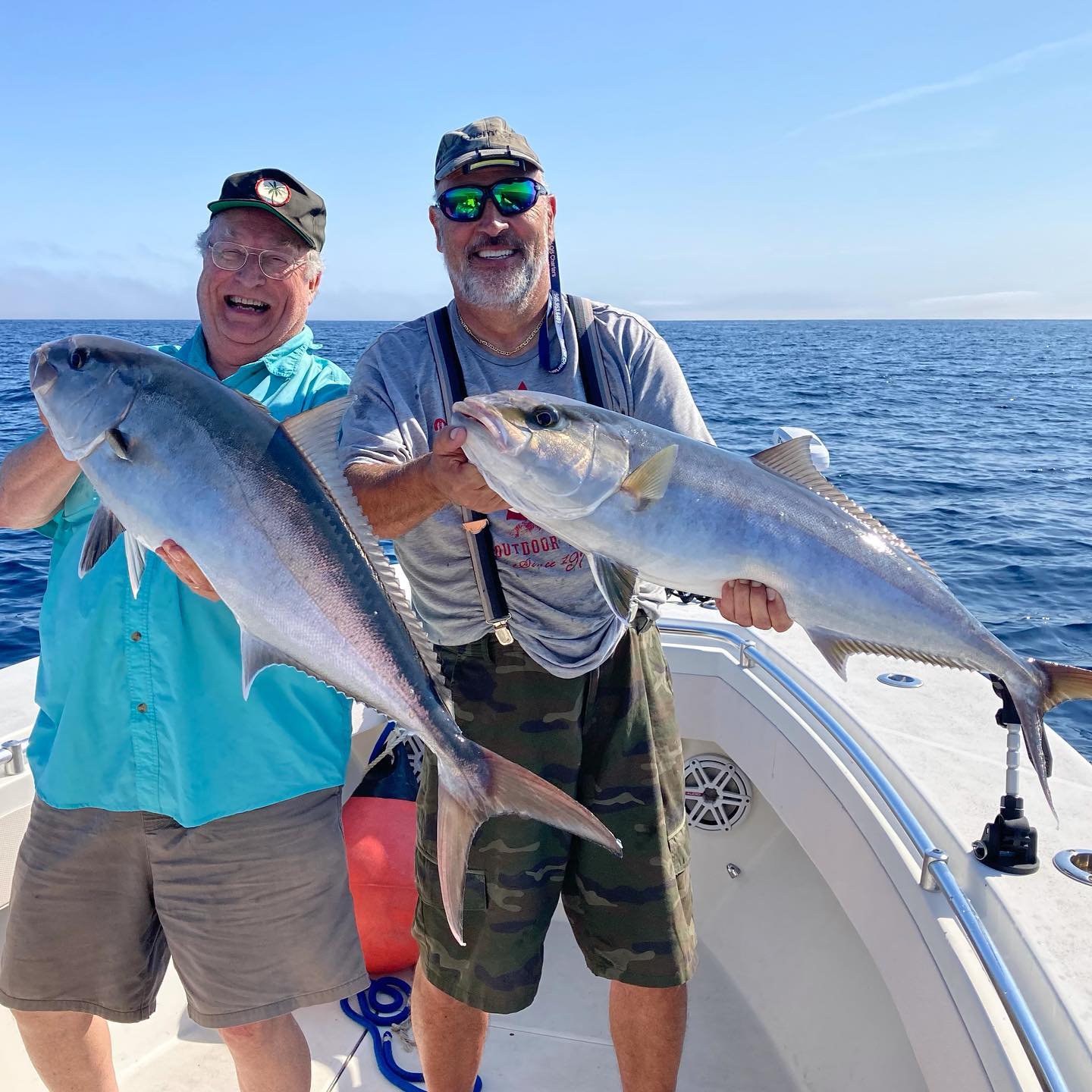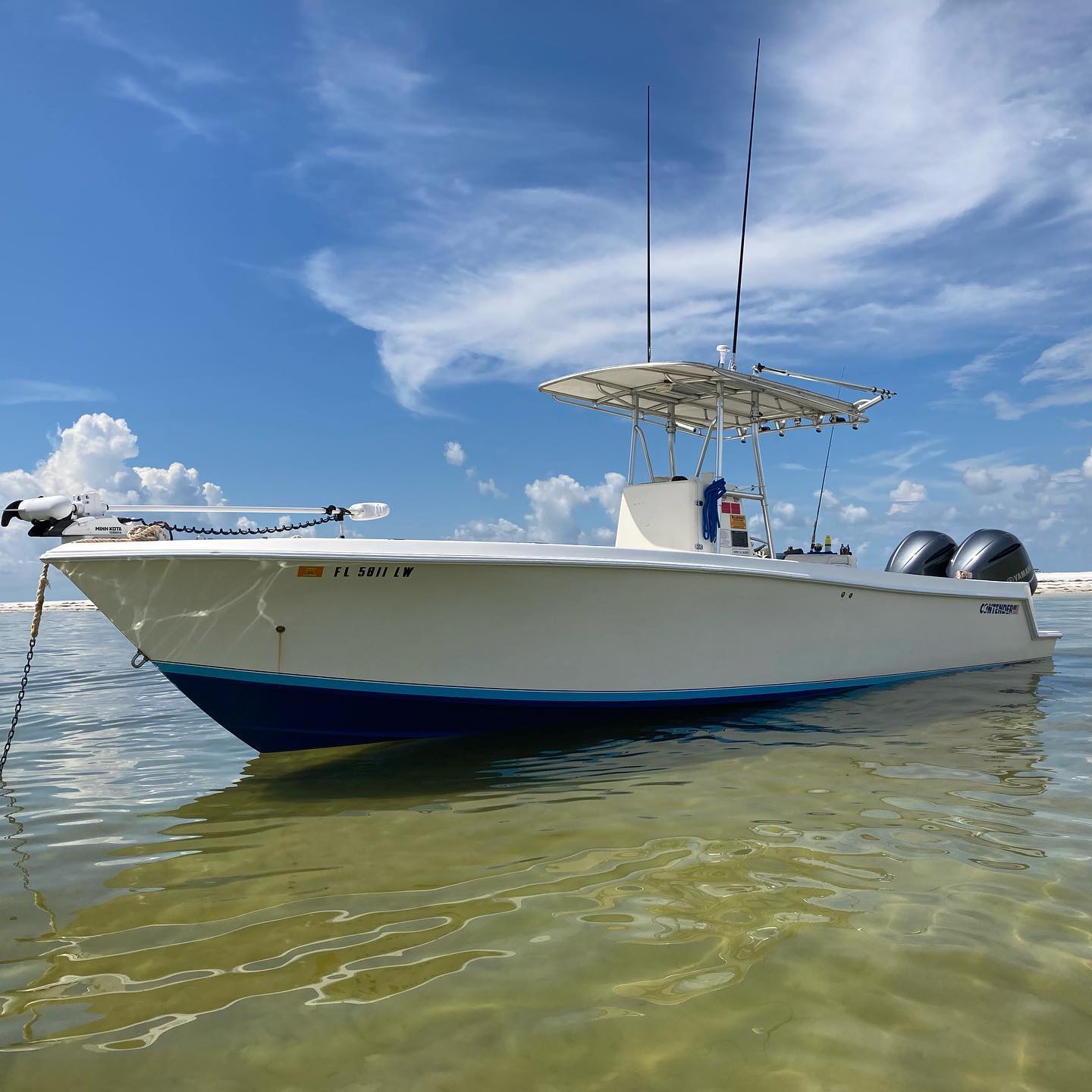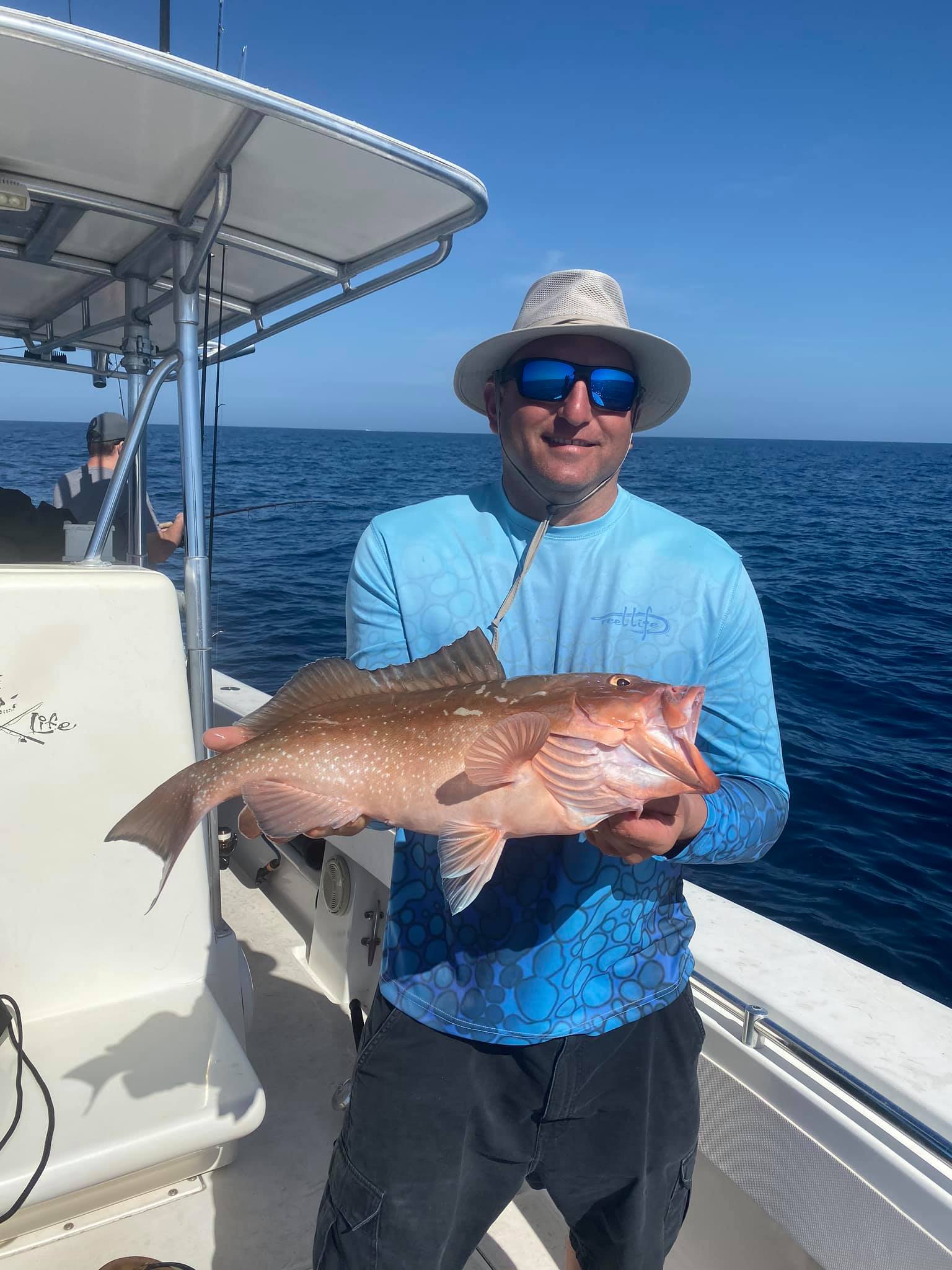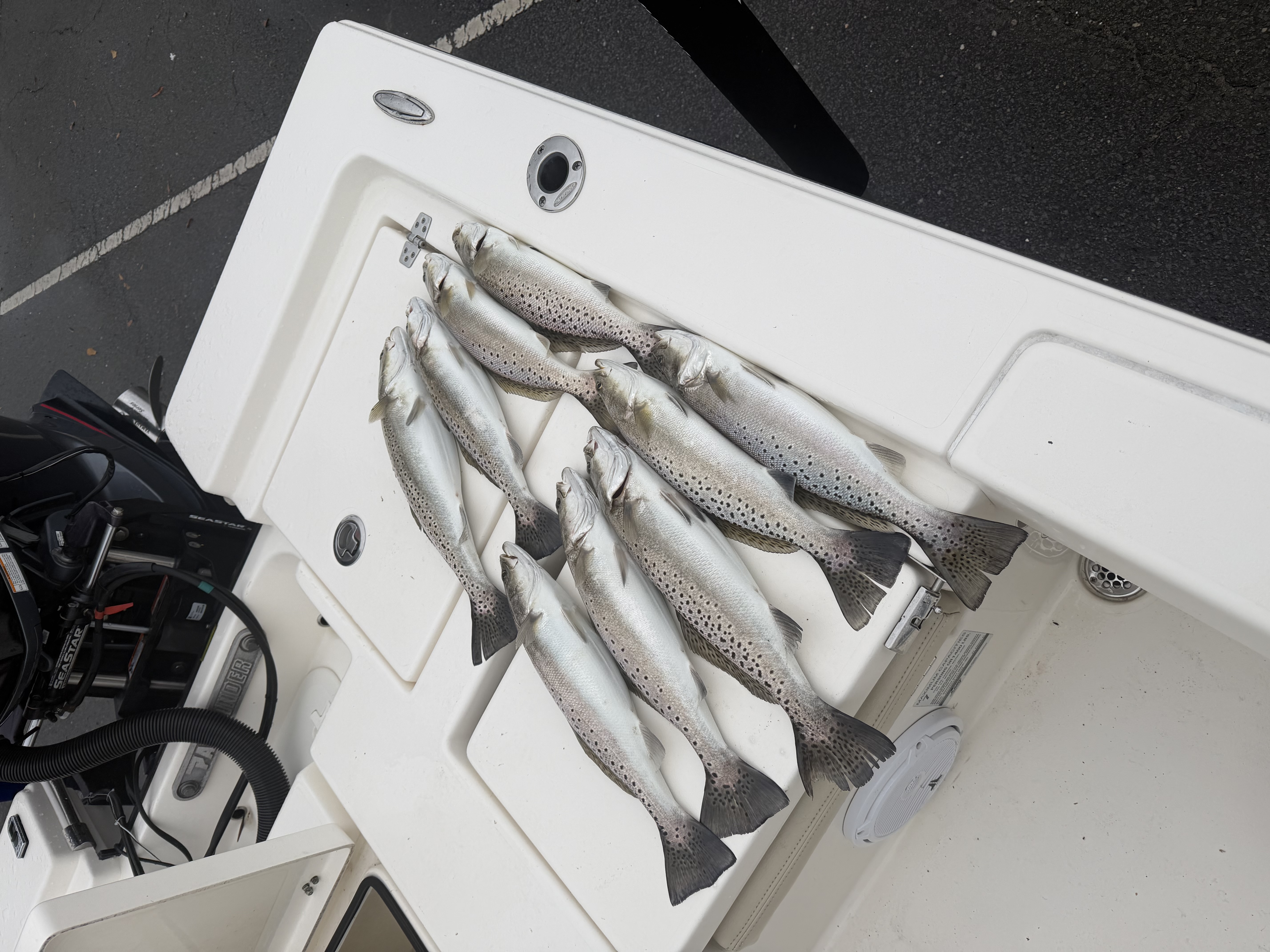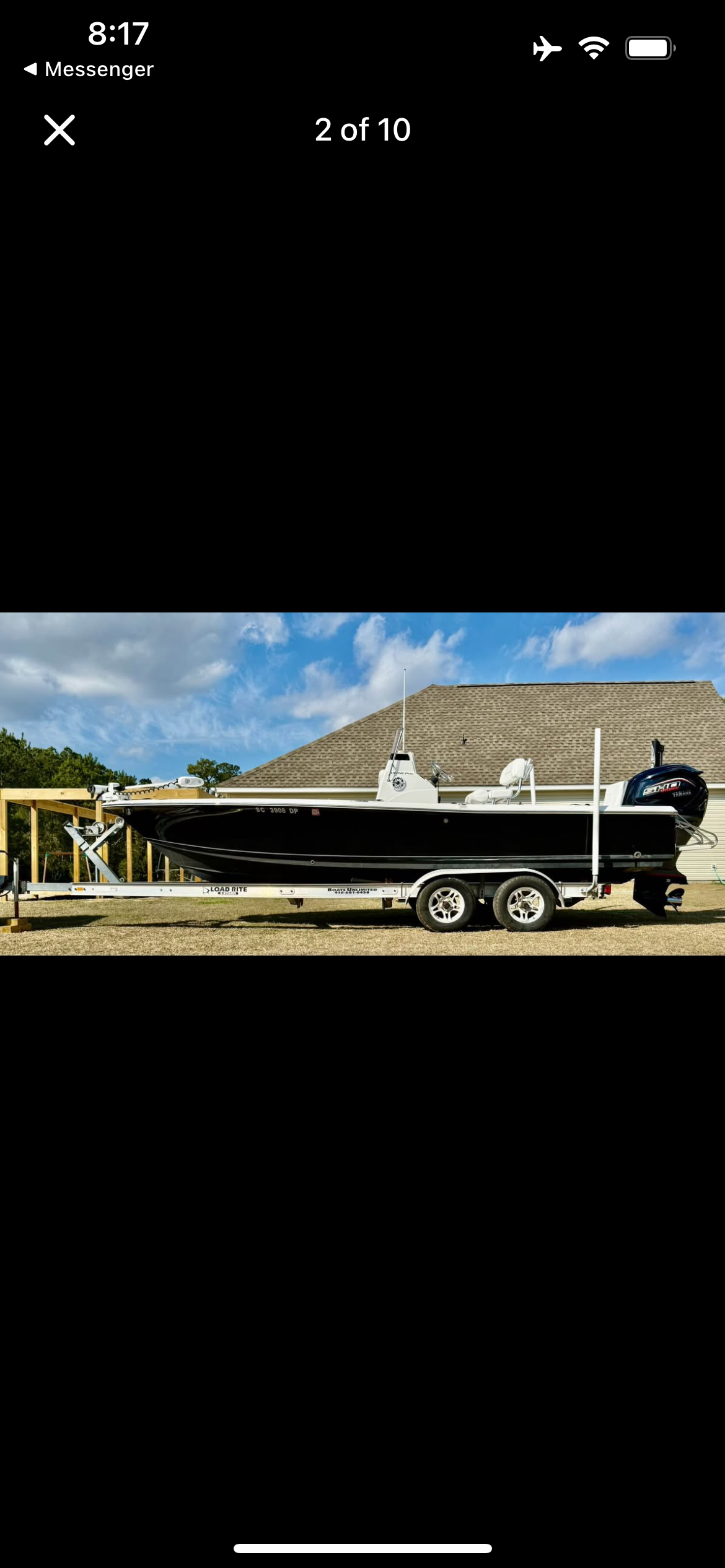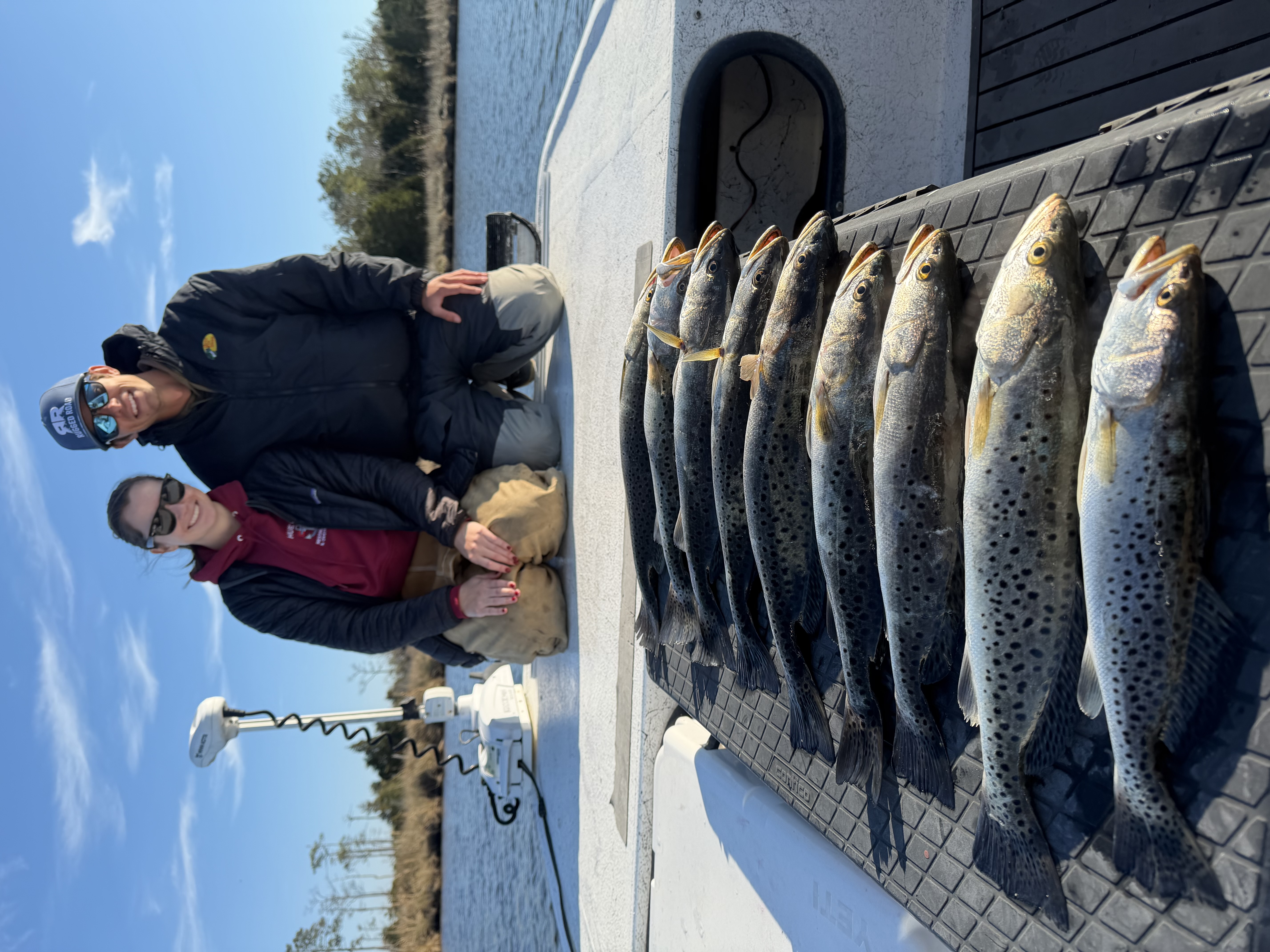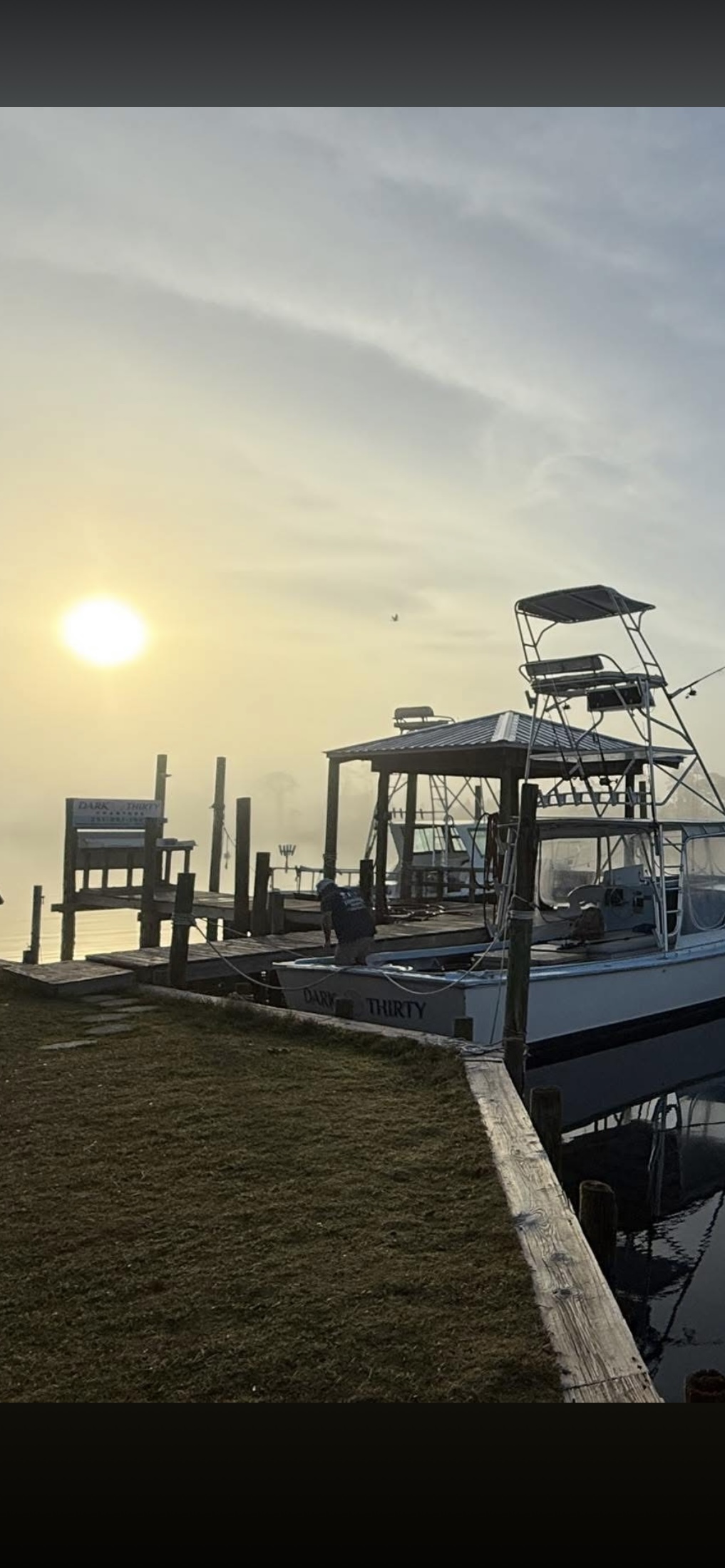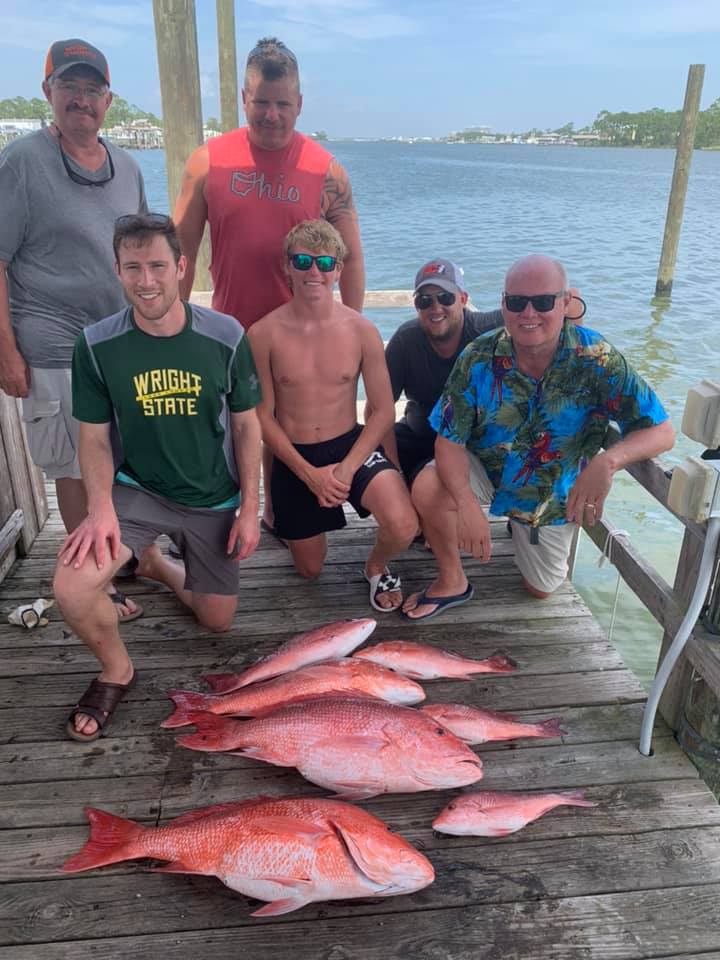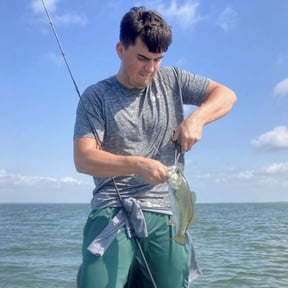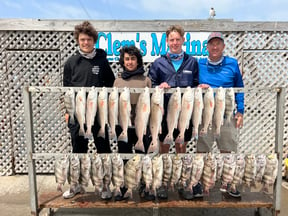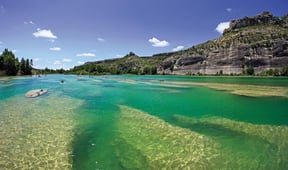Inshore Fishing Trip
Steelhead Fishing Trip
Deep Sea, Nearshore Fishing in Islamorada
4 Hour Half Day
Deep Sea, Nearshore Fishing in Islamorada
6 Hour 3/4 Day
Black Sea Trips
Inshore, Flats Fishing in Pineland
Fly Fishing Pineland
Inshore, Deep Sea, Nearshore in Palm Beach Shores
Catching Fish And Having Fun
Offshore Fishing Trip
Winter Speckled Trout
Deep Sea, Nearshore Fishing in Orange Beach
December Snapper Reopen Special!
We started Captain Experiences to make it easy to book fishing and hunting guides around the world. With over 2,000 Damn Good Guides, our platform makes finding and booking a trip seamless. Head here to check out our trips.
Different Types of Fishing Boats
Boats are one of the most useful pieces of equipment when it comes to fishing. A boat dramatically increases the number of fishing spots you can access compared to fishing from land. Boats have been used for over 5,000 years and in that time boats have changed significantly to better suit various tasks which led to the creation of a wide variety of different boats that we use today.
There are many different styles and types of boats, especially within the fishing community. These specialized boats are made to help anglers access different types of water from skinny backwaters to open blue water 100 miles offshore but the wrong boat can make accessing prime fishing spots difficult or even dangerous.
With so many different boats out there trying to pick the right one for a trip or yourself can be hard. To make your decision easier here is a breakdown of the most popular types of boats and what types of fishing they are used for.
What is a Center Console?
A center console boat is a broad category that could be broadly applied to many different boat designs. This category of boats is only defined by the feature of steering and throttle in the middle of the boat and not hull design or size. Technically any boat on this list could be considered a center console boat if it is an open design equipped with steering and throttle controls on a console in the center of the boat.
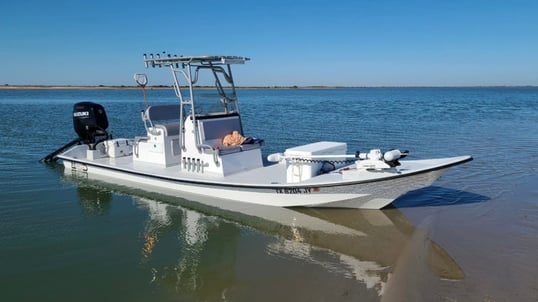
Usually, center console boats are a vee hull or catamaran made to tackle inshore and nearshore waters. These boats are capable of seating 2-8 people and are one of the most popular types of boats in fresh and saltwater across the country.
What is a Bay Boat?
Bay boats are usually 18-24 feet and have a vee hull that tapers to a wide flat bottom. This gives these boats the ability to take on moderate waves and also run in skinny water. Bay boats also have center consoles making them easy to navigate through tricky waters and allowing anglers to better reach prime fishing grounds. The front of the boat is usually an elevated deck used as a casting platform giving anglers more room and a better view.
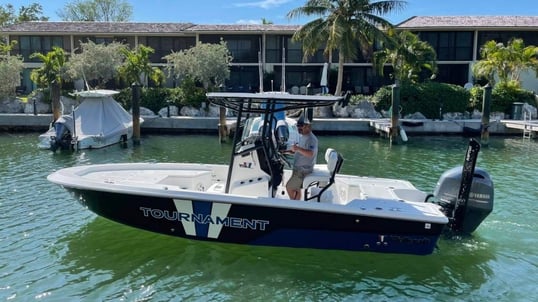
These boats can be well equipped with amenities like live wells, storage, electronics, and extra seating. With a wide variety of models and features, there isn’t much this boat can’t do. Bay Boats are great from getting gently pushed along in the flats sight-fishing for reds to catching amberjacks and snapper on nearshore reefs. The versatility of the bay boat has made it a popular choice among anglers for inshore and nearshore fishing on every coast.
What is a Kayak?
For anglers trying to maximize access without spending a ton of money, Kayaks are an amazing option. Kayaks are similar to a canoe but generally have a closed top and are paddled with a double-bladed paddle. These small and maneuverable vessels are ideal for calm water usually found inland or inshore. If you want to head out to a nearby spot and fish on your own in the flats, bays, lakes, rivers, or any other protected body of water, a kayak is a great option.
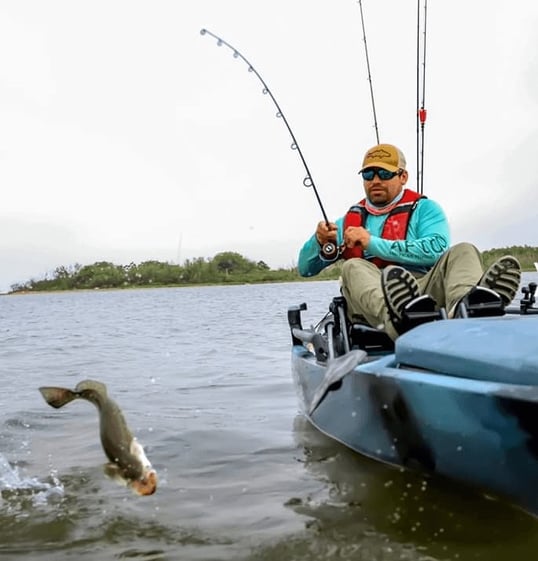
Some anglers have taken kayak fishing to the extreme chasing big nearshore and offshore fish from these tiny boats. While catching tuna and roosterfish is certainly possible and looks like a great time, kayak fishing is best suited to inshore waters where fish will not tow you out to sea and the small boat is less likely to get thrown around.
Kayaks have come a long way and now offer a ton of options thanks to the popularity of kayak fishing. These new boats are lighter, easier to control, fitted with rod holders, and even cooler compartments on some models, making them an ideal choice for inland or inshore anglers looking to get the most out of their trip.
What is a Skiff?
A skiff is a small flat-bottomed boat with a pointed bow and flat stern for mounting a small motor. Usually only seating one to three people, these boats are small but are great at getting into hard-to-reach places that are too far for a kayak or too hard to navigate with a bigger boat. These small boats are incredibly versatile and can be used for a variety of different types of fishing.
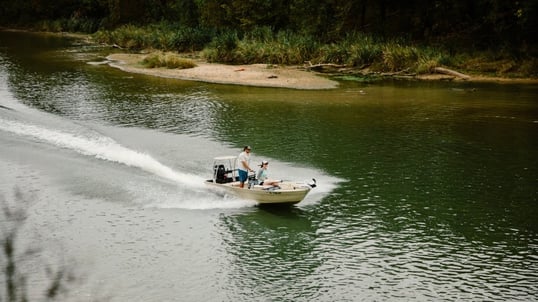
Skiffs are most commonly used in bays, backwaters, lakes, and rivers because they can cruise through tight spots and get to some of the best fishing grounds. These boats have enough room to carry one person and plenty of gear or a few anglers and their tackle. Although skiffs are small they can get you and a buddy on fish in places that can be difficult to navigate.
With a motor on the back, covering water is much easier than paddling but the range is limited by how much fuel you can carry. With calm weather and flat water, skiffs can venture out of the backwaters and into larger bays or even head a short distance away from shore. But with limited fuel and a small motor strong winds or currents could make getting back to the dock a little dicey.
What is a Utility Boat?
Utility boats come in all shapes and sizes but are commonly slightly larger than a skiff topping out around 16ft and made of aluminum. The larger size allows for a bigger motor, more fuel, and maybe another friend. This boat is very capable in inland and inshore waters with a relatively small footprint but more range and speed. These boats are very simple and are designed to have passengers sit in the middle and front of the boat while the boat operator sits at the back and uses the tiller on the motor to drive and steer.
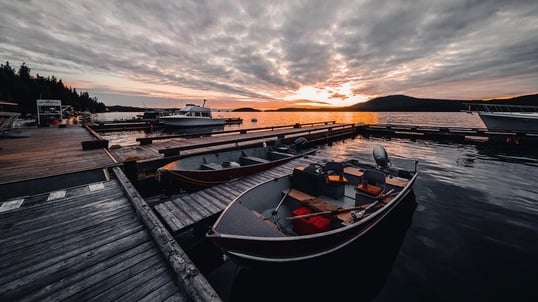
Utility boats come in a few different shapes including a modified V-hull or flat-bottom with a bow that is either flat or pointed. The modified V-hull offers improved stability but the flat-bottom allows the boat to run in shallower water. Which is better will depend on use, if you plan to fish bays and jetties the modified V-hull will be more beneficial but if you plan to fish skinny backwaters and flats then a flat bottom hull will give you a few more inches of clearance.
The modified V-hull, larger motor, and more fuel allow for slightly more adventurous trips with the ability to venture out of sheltered waters on calm days. A utility boat can hit spots a short distance from shore with more confidence than a skiff while carrying a couple of friends and all the tackle necessary for a great day of fishing.
What is a Panga?
Pangas are popular in the fishing communities of developing countries and can be either manufactured or hand-made. These boats are made by many different groups and for different tasks which is why there is so much variation from one panga to the next.
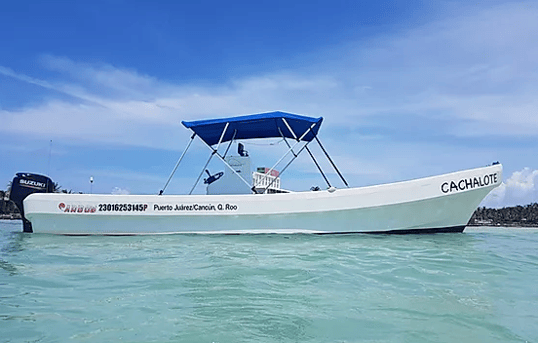
Pangas are made of wood and fiberglass and can range from 18-24ft long. These boats are made to be efficient in the water and easily powered by small outboard motors. The driver of the boat may be seated in the rear of the boat tiller steering or some pangas have console steering and throttle. Additionally, pangas often have buoyancy compartments and an upturned bow to make the boat more stable in a variety of conditions.
While pangs can run in relatively shallow water they are made to be launched from beaches and do many different jobs This boat is a workhorse and can fill several different roles including carrying up to 8 people, hauling nets, and any other fishing activities inland, inshore, and nearshore. Pangas can venture into offshore waters to do some deep-sea fishing but fuel capacity and rough seas will be the biggest limiting factors. This boat was created to be durable and versatile to meet the demands of the people they serve and over time it has been proven to be a very capable vessel in the right hands.
What is a Drift Boat?
A drift boat is a very specialized boat made for floating down rivers and rapids with ease. Drift boats have evolved from the open water dory design with changes made to improve rowing maneuverability and stability so anglers could have better fishing opportunities. These boats are also used to transport gear and other necessary items through rivers which have made them a very important part of river communities.
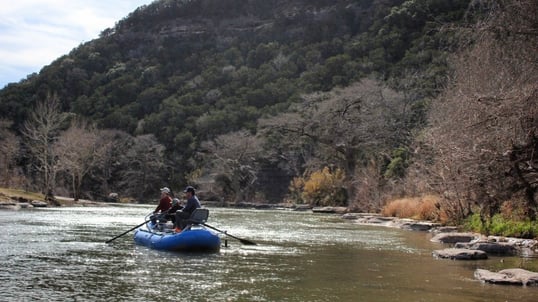
Traditional drift boats have an upswept bow and stern with a wide midsection. The bow is pointed and the stern is narrow which makes drift boats easy to spin while navigating obstacles on the river. The wide hull allows the boat to handle heavier loads without pushing deeper into the water. There is also a modern drift boat design that is a durable inflatable raft which is great at bouncing off of rocks and other obstacles in the water.. Drift boats are pushed and steered through the water by a pair of long oars. Drift boats generally navigate by getting pulled downstream in the currents but are steered and held in place by careful manipulation of the oars.
For fly fishing anglers, a drift boat with an experienced guide is the ideal choice for getting on fish. Although there are several variations of drift boats that have evolved over the years, they are all designed to easily handle river conditions. These boats can go through rapids then spin to hold a current creating the best opportunities for anglers to make casts into places where fish hang out.
What is a Bass Boat?
The bass Boat was designed to dominate lakes and as the name suggests, put you on the bass. Generally, bass boats are made for two people to comfortably fish and move around the boat but most of them can handle 4-6 people if they need to. This is the ideal boat for most lakes in the United States because it offers incredible mobility on the water as well as a stable casting platform. The bass boat has been popularized by bass fishing tournaments where anglers have to make the most of their time. bass boats are fast and can run shallow water which helps competitors get to their spots and maximize the time they can spend fishing.
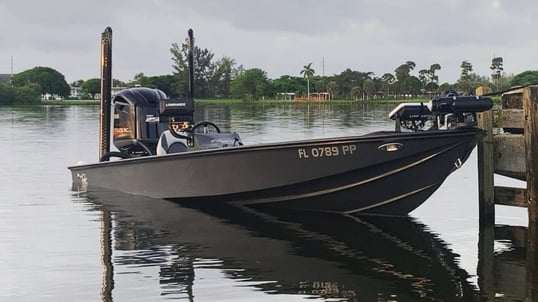
This boat is designed with a relatively shallow Vee-shaped bow tapering to a very smooth bottom allowing for these boats to fly through the water. Typical bass boats have a top speed of 35-50mph while the higher-end boats can reach speeds of up to 75mph. When traveling at high speed, bass boats barely sit in the water and almost skip across the surface. These boats can cross a lake in a hurry but bad weather can be a problem as they are not meant to chop through waves.
Most bass boats are equipped with a small electric trolling motor that allows anglers to position their boat with precision. This slow and accurate maneuverability lets anglers fish up against brush, banks, holes, and docks without the risk of damaging their boat. For freshwater anglers, the bass boat is the ideal choice for fishing lakes and wide rivers with ease.
What is a Pontoon Boat?
The pontoon boat is a very simple boat made up of two or three long and very buoyant pontoons. On top of the pontoons is a deck with a railing around it and a console for operating the boat. The simple design and layout make these boats more affordable and utilitarian than other more task-oriented boats. These boats are great for a variety of activities because of their ability to carry a lot of weight and remain very stable. Most pontoon boats can carry 12 people with even larger models able to carry up to 16 people which would be a very big group of anglers.
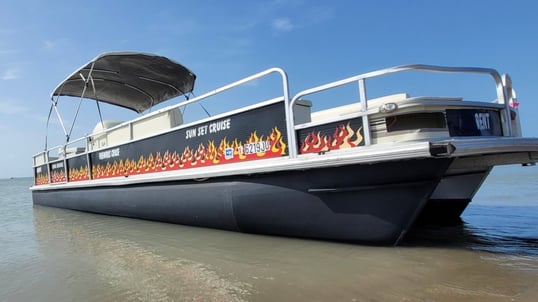
The length of a pontoon boat can vary from 18-25 feet and makes them stable when driving through small and moderate waves. The stability and carrying capacity make pontoon boats very capable vessels in most lakes, rivers, and inshore waters. With a range of motor options, these boats can travel at moderate speeds but are not as fast as bass boats or other more efficient boats.
What is an Airboat?
An airboat is a large flat bottom boat with a fan motor mounted above the water at the stern of the boat with large rudders used to steer. These unique boats are incredible for operating in shallow water and can even move across land. Airboats are great for fishing the most extreme shallow waters and are popular among anglers and waterfowl hunters.
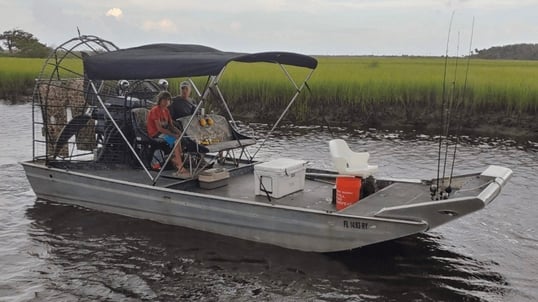
With an airplane-style prop engine pushing the boat across the water, these boats are not exceptionally fast but are more effective in shallow waters than a traditional outboard motor that runs the risk of striking the bottom. Airboats are very loud because the engine noise is elevated and the fan creates wind noise similar to a prop plane.
Airboats are most commonly used for flounder gigging and are outfitted with light bars in all directions that point down into the water. These lights are used at night and make it easier to see flounder in shallow water. Moving slowly through the water, anglers line the front and sides of the boat and spear flounder with gigs. In water shallow enough to ground even the lightest boats, airboats are the ideal choice and allow anglers to move freely through the backwaters.
What is a Catamaran?
Catamarans or “cats” for short, are similar in design to pontoon boats but are a solid hull that is more efficient in the water. Catamarans are a twin-hull design that is usually done using two narrow vee hulls parallel to each other. The hulls and the boat deck are all a single continuous fiberglass hull. This layout maintains the stability and carrying capacity of a pontoon boat but increases its ability to take on wind and waves.
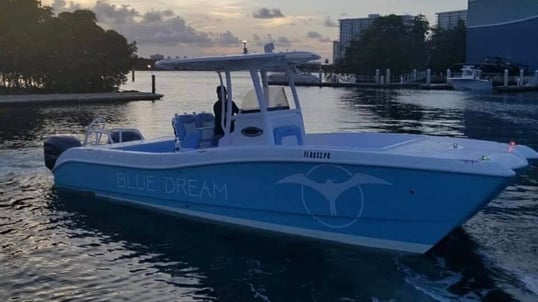
This strong and efficient hull design makes the catamaran the first boat on the list that is capable of weathering all water types depending on its size. On a normal day, a catamaran is capable of cruising inshore and nearshore waters or even head miles offshore. With substantial engines, these boats can power through most wind, waves, and current with the only major obstacle being severe weather conditions.
The catamaran is a balance between inshore maneuverability and offshore capability and range. While these boats can go the distance in most waters they lack some range which means shorter offshore trips. A catamaran means access to almost any water with only minor compromises which makes it one of the ultimate fishing vessels on this list.
What is a Cuddy Cabin?
A cuddy cabin is another popular boat that tends to be less focused on fishing but more focused on comfort while boating. These boats typically have a vee hull that’s 18-28ft long and are the first inboard boat on this list. The cockpit on these boats is offset to one side or the other to allow access to the defining small cabin toward the front of the boat. The interior of the cuddy cabin is usually outfitted with cushion seats that can also be used as a bed and some higher-end boats have a bathroom.
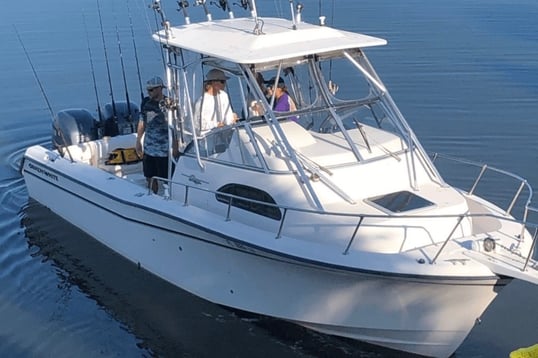
The front of the boat is sleek and sometimes has windows to let light into the cabin below. Moving back there is a cockpit that is surrounded by a windshield protecting the driver and passengers from wind and water. Toward the rear of the boat, there is plenty of seating and many times a table for food or drinks.
The cuddy cabin is well equipped to handle most bay and nearshore fishing but is not well suited for rough seas or shallow backwaters. The larger cuddy cabin boats are better for deep sea fishing with a deep hull and larger fuel capacity for reaching coveted offshore waters. What these boats lack in versatility they make up for in comfort with extremely plush seating for plenty of friends.
What is a Down East Cruiser?
The down east cruiser is a classic and popular boat design that has been in use by both commercial and recreational anglers for over 100 years. These Boats vary from 25-45ft long and have a deep Vee bow and hull, making them exceptionally seaworthy vessels. With single or double inboard engines these boats are able to cover a lot of water and carry a sizable load.
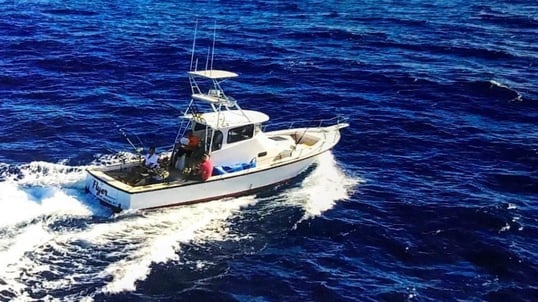
Originally the down east cruiser was popularized by lobster fishermen who needed to haul lobster pots and with an enclosed cabin and cockpit area, the boat was comfortable for both captain and crew regardless of the weather. With the popularity of charter fishing, the down east cruiser has slowly become a popular boat for deep-sea fishing and group fishing trips as well. These boats have plenty of room for large groups and are very stable even in substantial waves, making them well suited to run trips in most weather conditions.
With a large hull, big engines, and plenty of fuel these boats are great for long-range deep-sea fishing trips. Also because of their heritage, down east cruisers are built to be durable and can be kept in continuous use running shorter nearshore fishing trips. These boats are made to do anything you need them to in offshore waters.
What is a Sport Fisher?
The sport fisher is a purpose-built boat made for going offshore and catching big fish. These boats range in size from 30-65ft long and beyond with some going as large as 80 and even 90ft. With deep vee-shaped hulls, two inboard engines, and a range of up to 600 miles, a sport fisher can take you wherever you need to go to catch the fish you are after.
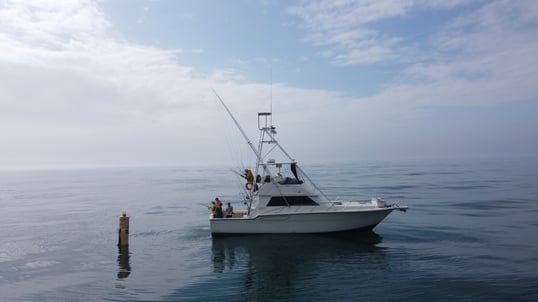
The most popular fishing technique with sport fisher is trolling and these boats are equipped with outriggers that allow you to troll with a spread of lures that are wider than the boat. These boats are also made to be efficient while cruising at trolling speeds to maximize fishing time on long trips. There are also numerous other features included on a sport fisher including loading doors for pulling big fish onto the deck, under-deck storage for icing fish, and a variety of electronics for locating fish and navigating the boat to the best spots.
These deep-sea fishing machines are also comfortable with an enclosed cabin and cockpit area that will comfortably fit 6-8 people on an average boat. Along with the enclosed cabin, sport fishers can usually be controlled from the tuna tower above the cabin which is great for spotting large fish or bait balls. These boats will sometimes also have boat controls on the deck to help anglers take back line when fighting a big fish. If you are looking for the ultimate deep sea fishing vessel this is the boat you want.
Fishing Boats Round Up
As you can tell there are boats made specifically for every type of fishing and having the right boat increases your chances of catching fish dramatically. The right boat for your next trip will depend on what type of fishing you are doing and what boats are available in the area. Understanding these boats will enable you to pick out the right boat for your next trip and make sure it can hold enough people or be stable enough to keep you and your group comfortable while catching fish.
Joey Butrus
Updated on August 3, 2023
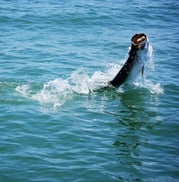
April 15, 2022

March 8, 2022

November 7, 2023
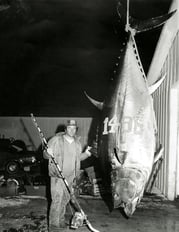
June 3, 2021

January 7, 2022
Related Articles
July 21, 2022
January 27, 2022
Featured Locations
- Fishing Charters Near Me
- Austin Fishing Guides
- Biloxi Fishing Charters
- Bradenton Fishing Charters
- Cabo San Lucas Fishing Charters
- Cancun Fishing Charters
- Cape Coral Fishing Charters
- Charleston Fishing Charters
- Clearwater Fishing Charters
- Corpus Christi Fishing Charters
- Crystal River Fishing Charters
- Dauphin Island Fishing Charters
- Daytona Beach Fishing Charters
- Destin Fishing Charters
- Fort Lauderdale Fishing Charters
- Fort Myers Fishing Charters
- Fort Walton Beach Fishing Charters
- Galveston Fishing Charters
- Gulf Shores Fishing Charters
- Hatteras Fishing Charters
- Hilton Head Fishing Charters
- Islamorada Fishing Charters
- Jacksonville Fishing Charters
- Jupiter Fishing Charters
- Key Largo Fishing Charters
- Key West Fishing Charters
- Kona Fishing Charters
- Lakeside Marblehead Fishing Charters
- Marathon Fishing Charters
- Marco Island Fishing Charters
- Miami Fishing Charters
- Montauk Fishing Charters
- Morehead City Fishing Charters
- Naples Fishing Charters
- New Orleans Fishing Charters
- New Smyrna Beach Fishing Charters
- Ocean City Fishing Charters
- Orange Beach Fishing Charters
- Panama City Beach Fishing Charters
- Pensacola Fishing Charters
- Pompano Beach Fishing Charters
- Port Aransas Fishing Charters
- Port Orange Fishing Charters
- Rockport Fishing Charters
- San Diego Fishing Charters
- San Juan Fishing Charters
- Sarasota Fishing Charters
- South Padre Island Fishing Charters
- St. Augustine Fishing Charters
- St. Petersburg Fishing Charters
- Tampa Fishing Charters
- Tarpon Springs Fishing Charters
- Venice Fishing Charters
- Virginia Beach Fishing Charters
- West Palm Beach Fishing Charters
- Wilmington Fishing Charters
- Wrightsville Beach Fishing Charters
